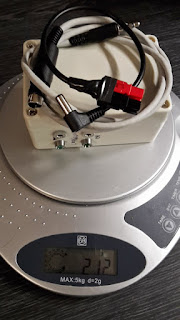This instructions
assumes that you have already downloaded piardopc to your Pi, have an
usb sound card and some piece of software that uses Ardop to send and
receive data over the air. Pat and ARIM are both excellent programs.
Info from the maker
here.
Open a terminal, if
connected to an monitor, or SSH into the Pi. Find the Pi's IP address
by using Fing on an android phone or tablet connected to the same
nettwork. If using Juice ( or other terminal amulator/SSH app) on
your phone use Screen to be able to run multiple processes in one
terminal.
Navigate to the
folder where you downloaded piardopc. Make it executable by running
the command " sudo chmod 755 piardopc "
Connect an USB sound
card and run the command " arecord -l "
This gives me the
output:
**** List of CAPTURE
Hardware Devices ****
card 1: Set [C-Media
USB Headphone Set], device 0: USB Audio [USB Audio]
Subdevices: 1/1
Subdevice #0:
subdevice #0
Remember the card
number and navigate to your home folder and open or create the file
.asoundrc. " nano .asoundrc " The . in front of the file
name is important.
This file should
contain the following lines. Just copy and paste, and replace the
card number with the output number from arecord.
pcm.ARDOP {
type rate
slave {
pcm "plughw:1,0"
rate 48000
}
}
CTRL+o saves the
file and CTRL+x exits nano.
Start ardop with PTT
on GPIO 17 by navigating to the folder with piardopc and running the
command " ./piardopc -p gpio "
If everything is
working properly you will see something like this in the terminal.
pi@raspberrypi:~ $
./piardopc -p gpio
ARDOPC Version
1.0.2.5l-BPQ
GPIO interface for
PTT available
Using GPIO pin 17
for PTT
ARDOPC listening on
port 8515
getReadDevices
Card 0, ID `ALSA',
name `bcm2835 ALSA'
Card 1, ID `Set',
name `C-Media USB Headphone Set'
Device 0, ID `USB
Audio', name `USB Audio', 1 subdevices (1 available)
1 channel,
sampling rate
44100..48000 Hz
hw:1,0 USB
Audio(C-Media USB Headphone Set)
getWriteDevices
Card 0, ID `ALSA',
name `bcm2835 ALSA'
Device 0, ID
`bcm2835 ALSA', name `bcm2835 ALSA', 7 subdevices (7 available)
1..2 channels,
sampling rate
8000..48000 Hz
hw:0,0 bcm2835
ALSA(bcm2835 ALSA)
Device 1, ID
`bcm2835 ALSA', name `bcm2835 IEC958/HDMI', 1 subdevices (1
available)
2 channels,
sampling rate
44100..48000 Hz
hw:0,1 bcm2835
IEC958/HDMI(bcm2835 ALSA)
Card 1, ID `Set',
name `C-Media USB Headphone Set'
Device 0, ID `USB
Audio', name `USB Audio', 1 subdevices (1 available)
2 channels,
sampling rate
44100..48000 Hz
hw:1,0 USB
Audio(C-Media USB Headphone Set)
Opening Playback
Device ARDOP Rate 12000
Playback Buffer Size
65536
Opening Capture
Device ARDOP Rate 12000
ARDOPC listening on
port 8515
Input peaks = 0, 322
Input peaks = 0, 321
Input peaks = 0, 319
Connect you radio
and make level adjustments.
Adjust RX level
until Input peaks show something around +/-20000
More about this here
http://www.cantab.net/users/john.wiseman/Downloads/Beta/ARDOPC.txt
You can use
alsamixer from terminal to adjust volumes.
Next use your
favorite client and send some data to adjust TX level according to to
your radios instructions.
Thats about it.
Good luck.


Ingen kommentarer:
Legg inn en kommentar